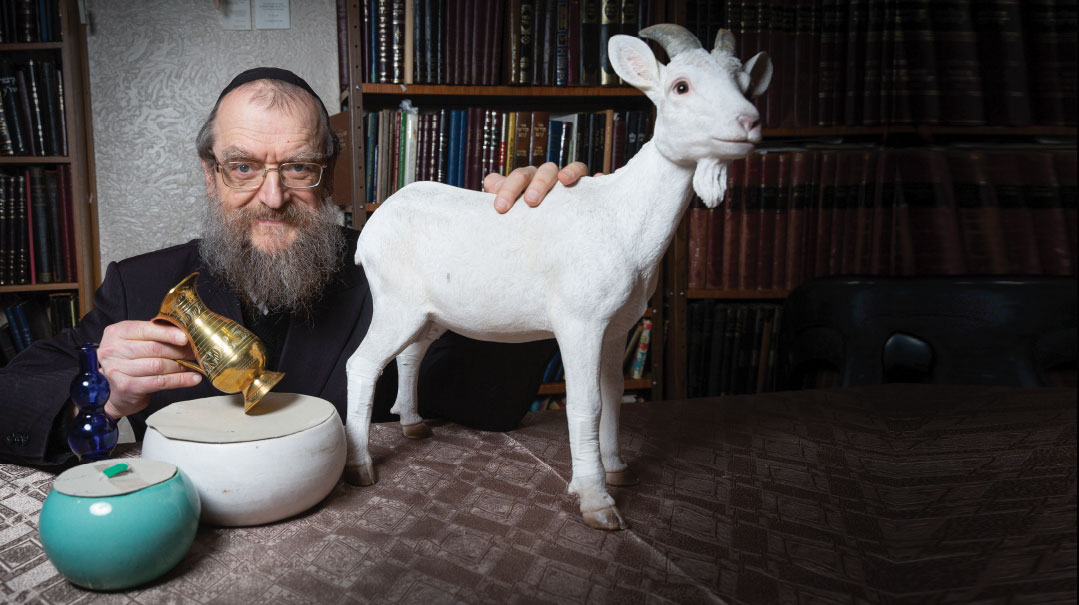One Pure Pitcher
| December 9, 2020How did the Greeks actually contaminate all that oil, except for one small pach, considering that tumah, spiritual defilement, has very specific parameters?

What was the secret of the solitary, undefiled pach hashemen found hidden in a ransacked Beis Hamikdash?
The laws of tumah and taharah, made clear by a rabbi who never goes anywhere without his props, can help bring us into the mindset of the conquering Greeks, bent on destroying any vestige of G-dliness in the holiest place on earth
Triumphant footsteps. Jeering shouts. Clanking armor. The rank odor of sweat and alcohol mingles with faint echoes of the sublime scent of the Ketores. The cries and groans of the wounded and dying combine with the hoarse chants of the conquerors — some of them their very own brethren.
The invading hordes, bent on destruction and defilement, stomp their way around this holiest of sites, plundering precious vessels and smashing what they can’t carry. Yochanan, the righteous Kohein Gadol, has been assassinated, and the bloodthirsty Syrian-Greek ruler Antiochus Ephiphanes, having enacted a series of harsh decrees against the Jews, encourages the bloodshed and degradation. His men gleefully swig from earthenware amphoras of wine, break open sealed flasks of oil and spill them over the blood-and mud-mottled floor. One bulky centurion stashes a flask or two in his scabbard to take home to his wife. Another considers smearing the quality liquid into his skin. A third stabs at oil seals with the point of his sword, sowing destruction for the sheer fun of it. His comrades follow suit, their mocking voices echoing through the Heichal.
This is the tragic scenario our minds conjure up when we envision the Syrian-Greeks overrunning the Beis Hamikdash and contaminating the entire inventory of holy oil designated for the Menorah. The Greeks, joined by their Jewish-Hellenist allies, were bent on removing all vestiges of spirituality from the Jews who stubbornly clung to a narrative where an omniscient G-d was present and involved in their lives — and there was no place more tangible than the Beis Hamikdash where the connection of the physical world to its spiritual core was revealed.
But how, in fact, did the Greeks actually contaminate all that oil, except for one small pach, considering that tumah, spiritual defilement, has very specific parameters?
It’s actually a question that commentaries and poskim have grappled with over the nearly 22 centuries since the Chanukah miracle, and one that Rabbi Doniel Orzel — a rosh kollel and rav of Eitz Chaim in Manchester, England, popular for his hands-on halachic presentations to live and virtual audiences — believes he’s solved.
Oops! We could not locate your form.













